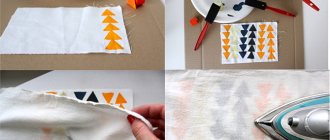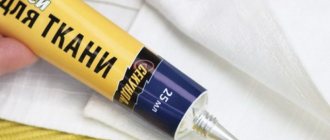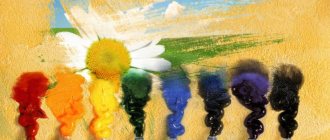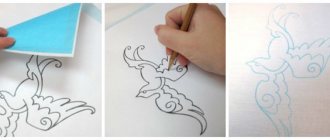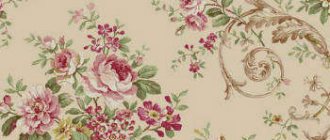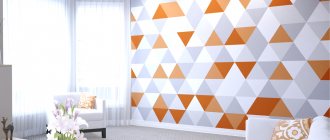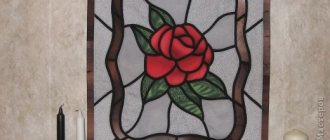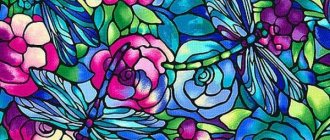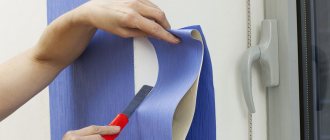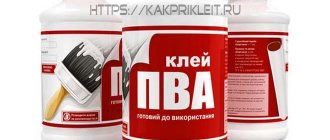We live in an era of abundance of mass goods. It's no surprise that consumers want to stand out from the crowd and make their wardrobe unique. Of course, you can buy expensive branded goods, or you can show your creativity and turn an ordinary item into an exclusive one. Stickers on clothes have become an indispensable assistant for lovers of creativity. They are varied, which is why they are called by different terms: stickers, decals, transfers, stickers. However, the essence of these products is always the same - these are inscriptions or images that can be transferred or glued to the fabric.
With the help of light
You can transfer the outline of any image from paper to textile material using light. To complete the work, you need to have an ironed, clean fabric and the image itself. The paper is taped to the window. The material is spread over the image. It is also fixed with tape. Then, using a simple pencil, trace the contours of the image.
Advantages and disadvantages
minimum costs;
ease of implementation;
the ability to obtain a clear outline.
only the outlines of the picture are printed on the fabric;
does not translate the color of the drawing.
You can use a rectangular piece of glass instead of a window. Then the transfer of the image from paper to textiles is performed in a horizontal position. The glass is placed on the seats of two chairs located opposite each other. A light source is placed below - a table lamp. The image and material are attached to the glass using tape. Having fixed the fabric, trace the contours of the design with a simple pencil.
Types of thermal stickers
Considering the entire set of thermal stripes, they can be classified according to several indicators.
An effective way to firmly secure the image is to sew the accessory along the edge.
So, you can use:
- Flex-type transfers - they have a thermal film base and a smooth front surface.
- The phlox option also has a thermal film on the base, and the outer surface has a velvety structure. This option looks especially impressive as a patch on simple items, such as cotton T-shirts.
- A product with increased elasticity has the ability to stretch. Due to this, it is excellent for stretch fabrics.
- With various types of effects, for example, with a volumetric or holographic image, or a surface dotted with glitter.
- Reflective ones have a special outer coating that effectively reflects the rays of passing vehicles, which contributes to greater safety for children. It is for this reason that this kind of reflector should be glued to children's outerwear, for example, a jacket.
- Phosphorescents are able to accumulate a sufficient amount of sunlight during the day and then begin to emit it at nightfall. Thus, such stickers glow quite clearly on a fabric base in the dark.
Thermal film
It is important to understand that all applications that have thermal film as a base have the ability to lose the ability to glue the product to the surface over time. For this reason, you should not leave or store them for too long, much less expose them to direct sunlight. After all, ultraviolet radiation significantly reduces the ability of the glue to adhere tightly to the canvas.
Patterns, inscriptions or images must be laid with the front side facing the iron.
Among the advantages of such an appliqué is a fairly thin image that completely follows the curves of the fabric, no matter how soft and flowing it may be. It will also serve for a long time if you do not iron it on top again. If you need to iron an item, it must be done from the wrong side. This is due to the fact that, as a rule, the outer side of the product has a rubberized surface.
The film from the thermal adhesive should not be torn off immediately after gluing; let it cool a little.
Among the disadvantages, it is worth noting the cracking of the surface - it is especially obvious after the fabric is stretched several times. It is for this reason that it is not advisable to attach them to fabrics that stretch too much.
Thermal stickers and thermal decals themselves are not expensive. But how can they freshen things up!
Textile applique
But textile-based appliqués have an inner side that is covered with non-woven fabric. Such decorations are quite easily attached to clothing by simply ironing them. But it is necessary to take into account one feature - over time, it is precisely such applications that tend to peel off. And this is their “weak” side. Although, if you run the iron over the surface again, it will be fixed, but, unfortunately, not as carefully as originally.
They come in different colors, sizes and designs, ranging from simple shapes to characters from your favorite movie, cartoon, etc.
It is important to understand that modern thermal stickers are represented by a wide variety of images. They can be matched with both children's clothes and stylish adult wardrobe items. In any case, they will always be original - the main thing is to maintain the style, color scheme and the appropriateness of the image in a given situation on a particular thing.
You can create your own drawing, forming a unique thing.
We use an iron
You can transfer the drawing using an ordinary iron. True, in this case it is necessary to buy paper with a special coating for inkjet printing, designed for thermal transfer of the image printed on the printer onto light cotton fabric. One such sheet costs 0.5-1 dollar.
First you need to select an image, then print it in color on thermal paper. Then spread the fabric on the table or ironing board.
On top of the textile you need to place a drawing printed in color, face down. The top of the picture must be ironed with a hot iron (the steaming mode must be turned off). While the paper has not cooled down, it must be quickly removed from the fabric. A bright, richly colored image will remain on the surface of the material.
See also
Suitable types of paints for pipes and instructions for their application
Advantages and disadvantages
allows you to get a copy in color;
ease of implementation.
You will need thermal transfer paper;
fabric with a printed picture in color can be washed at a temperature of no more than 40 degrees;
Do not use bleach when washing.
Wash
In general, products with thermal transfers hold up well in washing. It can be done either manually or in a machine. Any powder can be used in machine wash. The water temperature should be no higher than 60º (better if 40º). Do not use stain removers or bleaches as they will attack the paint.
When washing by hand, you can use laundry soap, but without prolonged soaking. Also, to avoid damaging the image, do not rub it too hard with your hands.
It is recommended to iron items with thermal printing from the reverse side. This applies not only to images, but also to compositions with rhinestones.
Can be washed by hand or machine
Ironing is done inside out
Copy paper
The easiest way to transfer a drawing to textiles is to use carbon paper. You can buy a translator in any office supply department. Copy paper comes in black, white and colored. With its help you can transfer an image onto fabric (linen, cotton). Typically, this method of picture transfer is used for embroidery. It is done very simply: a carbon copy is placed on the material, and a paper image is spread on top of it. The contours of the drawing are outlined with a sharp simple pencil. The image is copied onto the fabric.
Advantages and disadvantages
ease of execution;
minimum costs;
the ability to get a clear outline of the picture.
black carbon paper stains white fabric;
Suitable for smooth fabrics only.
Changing the size of a picture
Sometimes you need to change the size of the picture for the fabric - make it larger or smaller. To do this, the image is divided into approximately equal squares, and on clean paper a grid is made of the same number of squares, but of a larger (smaller) size. Then the drawing is transferred manually along the lines taken from each square.
The result will be a picture with the necessary parameters. It is best to divide the drawing into many squares - this way the finished drawing will be the most accurate. Afterwards it can be transferred to fabric in any convenient way.
Powdering
You can transfer the design onto the material in an original way, using tooth powder, crushed chalk or activated carbon, and also blue. First they make a matrix. It can be used several times. This is a blank in which the design along the contour is pierced with a sharp object (a needle). There are many holes on the surface of the matrix. The more there are, the higher the image accuracy. All holes are sprinkled with powder. The matrix is first attached to the material. For white surfaces, choose a dark powder; for black surfaces, on the contrary, light powder.
Advantages and disadvantages
minimum costs;
clear contours.
a pattern is obtained on the fabric in one color;
labor intensity of the process.
Required materials and preparation
Depending on how the drawing is intended to be translated, different devices and additional materials may be required. Here is a sample list:
- carbon paper or tracing paper;
- thin cloth;
- simple pencil, chalk;
- needle;
- transfer pencil;
- pins;
- iron;
- lamp;
- glass;
- Printer;
- fabric and pattern.
To prepare, you should print the image. You can make a drawing in any program on your computer that produces graphic images and prints them. If the pictures are small, they are printed on one sheet.
All borders should be clear, bold, and clearly visible - this will make transferring the design onto the fabric easier. You can even artificially increase the contrast and saturation of lines, and, if possible, remove light details from the picture.
Transparent fabric
If you use transparent material for drawing (organza, nylon, non-woven fabric, veil, silk), then the image located below will be clearly visible. You can securely fasten the fabric over the picture and immediately paint with acrylic or aniline paints. The base paper drawing must first be attached with tape to a wooden board.
Advantages and disadvantages
the ability to clearly see the drawing;
ease of implementation.
the paint will seep through the fabric;
the coloring composition can corrode the paper base.
Application to a bolognese jacket
Applying a decal on a bologna jacket is more difficult than on a T-shirt. Bolon is a synthetic material and will melt under high temperatures.
Outerwear contains insulation, which makes gluing the appliqué difficult.
Rules for applying thermal stickers to jackets and pants:
- Dry the jacket thoroughly.
- If there is a hole, sew it up first.
- Make the surface smooth; if the applique is applied to a sleeve, then insert a folded towel into it.
- Attach a sticker.
- Cover the sticker with cotton cloth.
- Using a heated iron without steam, press the sticker for 5 seconds. The soleplate of the iron must be on a protective cloth.
- For reliability, you can secure the sticker with threads, sewing it over the edge.
Be sure to read:
5 ways to lengthen trousers, jeans or sweatpants at home
Laser printer
A laser printer and paper for freezing food products (freezer paper) will help to transfer the image to matter. It is better to print the design on thin white cotton or linen fabric. The freezing paper with the smooth shiny side must be glued to the material using an iron. For printing, cut out an A4 size rectangle.
Expert opinion
Zakharova Irina Yurievna
Cleaning professional with 15 years of experience. Our best expert.
Ask a Question
This is the format accepted by most printing devices. The main thing is that there are no protruding threads along the edges of such a workpiece, otherwise they will get stuck in the mechanism and break the printer.
You can print a picture on textiles in any color complexity. To do this, the glued blank (from freezer and fabric) is placed in the printer. First you need to make sure that the design will be printed on fabric and not on paper. Sometimes a printer not designed for printing on fabric may fail. In this case, the attempt must be repeated until the printing device accepts the workpiece.
See also
Top 4 types of black matte paint, their pros and cons and how to use
Advantages and disadvantages
the ability to receive a copy in color;
perfect picture.
labor-intensive process;
a printer not designed for printing on fabric may not accept the workpiece;
The pattern obtained on the fabric is erased during frequent washing.
With your own hands
If you can’t buy a sticker, but you still need one, you can create a decal yourself. It's not as difficult as it seems at first glance. And besides, it's quite interesting. You can involve your child in the process. Both he and you will enjoy creating a thermal sticker with your own hands.
- plastic bag with a beautiful pattern;
- parchment paper;
- stationery scissors;
- iron.
- Cut out the picture you like from a plastic bag. This will be the basis of the application.
- We apply the cut piece of polyethylene to the place on the clothing where it will subsequently be glued.
- Cover the polyethylene print with a clean sheet of paper.
- Heat up the iron and press it onto the paper covering.
- We hold the household appliance under pressure for up to 30 seconds, remove the iron, let the paper cool completely and check the quality of the work done.
Wardrobe items decorated with appliqués require special care. By following simple rules, you can maintain the original appearance of your clothes for a long time. Washing items with thermal stickers should be done in water with a maximum temperature of 40°C. Before putting the item in the washing machine, it is recommended to turn it inside out.
It’s not enough to know how to glue an applique onto clothes. The owner of a decorated item, among other things, must have ironing skills. You can only apply the iron to the wrong side of the fabric, avoiding the area with the sticker side if possible. Using a hot iron is also not recommended. It is better to give preference to the average temperature of the metal plate.
Solvent
For such a translation you will need A4 office paper, a solvent for oil paints, cotton swabs, and a clean white cloth. You can translate a black and white drawing or mirror-printed text. The paper with the picture is applied to the material and securely fixed. Then the paper sheet is impregnated with oil solvent using cotton wool. The paint on the paper gets wet and stains the material. For a tighter connection, the paper sheet needs to be pressed against the fabric with something hard (a spoon).
Advantages and disadvantages
minimum funds and costs;
ease of implementation.
the smell of solvent will remain;
After washing, the design may be erased.
